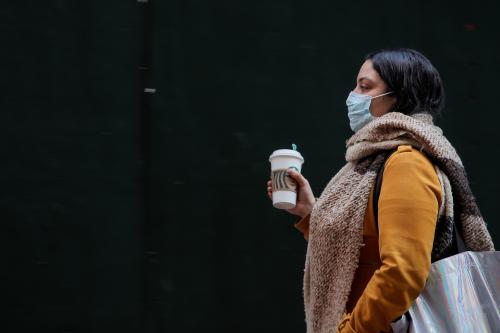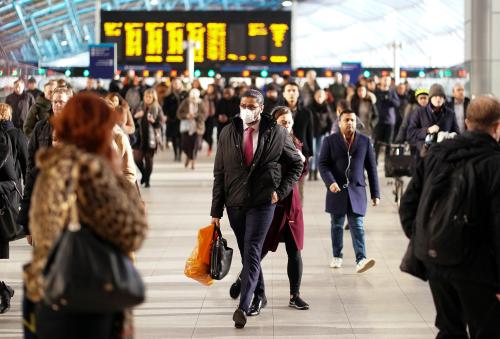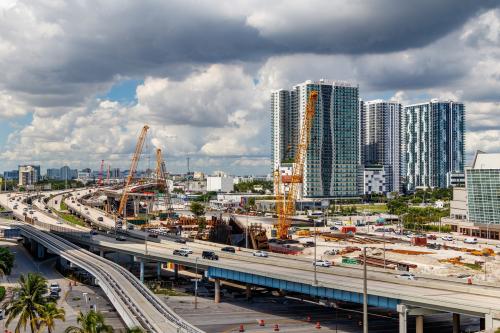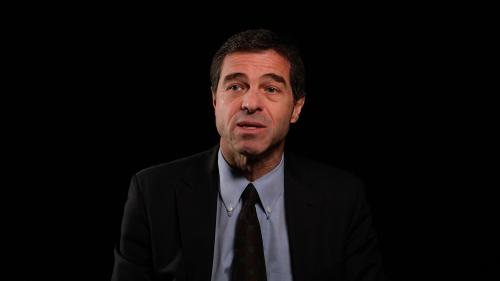This paper was originally published by The Australian National University as a CAMA working paper on June 24, 2020. It was presented at the Crawford School of Public Policy’s Global economic impacts of COVID-19 webinar.
In late 2019, a novel coronavirus was causing infections in China. The virus had close virological characteristics to the coronavirus that caused SARS (SARS-CoV) and was named SARS-CoV-2. Even though the SARS-CoV-2 has been less fatal than SARS-CoV, SARS-CoV-2 has been much more infectious. Very quickly after the Chinese outbreak, other countries began reporting cases. The evolving epidemic was officially declared a pandemic by the World Health Organization (WHO) on 11 March 2020.
In early February 2020, we undertook a study that applied data from historical pandemics, information on the evolving epidemic in China, and our experience modelling SARS and Bird Flu to explore the potential global economic implications of plausible scenarios in a global economic model. “The global macroeconomic impacts of COVID-19: seven scenarios” was released on 2 March 2020. Early results were made available to policymakers in major economies and international institutions. At the time the paper was written, it was still uncertain whether the outbreak would translate into a pandemic. Thus, to estimate what could be the likely costs of a pandemic, we explored seven scenarios. Three scenarios explored the economic costs to the world if the outbreak only occurred in China and four of the scenarios explored the global economic costs if a global pandemic occurred but at varying degrees of attack rates and case mortality rates.
Six new pandemic modelling scenarios are outlined here.
The evolution of the pandemic and the economic implications continue to be highly uncertain. However, as new information emerges, notably greater understanding through scientifically based interventions in some countries and outright failure in others, the nature of the uncertainty has changed. Initially, uncertainty was about how close COVID-19 would be to the historical experience of pandemics.
“The focus now is how to open economies hit with a massive economic shock and how economies will adapt to the post-COVID-19 world.”
After sixth months, the concern is now about how frequently the pandemic might recur and how high the economic costs of responding or not responding in some countries might be. Policy in many countries initially was designed to contain the virus and to minimise economic disruption, particularly in the labour market. The focus now is how to open economies hit with a massive economic shock and how economies will adapt to the post-COVID-19 world. It is uncertain whether a vaccine will be available in time to prevent more pandemic waves and, if not, what would be the least costly option of managing them. It is an open question of whether lockdowns are the right option for managing recurring waves or if it will be possible for people to adapt to long-term social distancing and improved hygiene practices.
In this paper we attempt to help guide policymakers determine how different responses might change possible economic futures. In addition to our previous experience in modelling pandemics and particularly COVID-19, we capitalise on the novel, yet imperfect, information on cases and responses to the pandemic worldwide.
The first section places the current study in the context of our previous research and other recent studies conducted by the International Monetary Fund (IMF), the Organization for Economic Cooperation and Development (OECD) and the World Bank on economic repercussions of COVID-19. Section 3 summarises the G-Cubed model used in the study. Section 4 explains in depth how and why different scenarios and shocks were constructed. The results from the simulations are presented in Section 5 before we conclude and present possible policy implications arising from the study.
The authors did not receive financial support from any firm or person for this article or from any firm or person with a financial or political interest in this article. Neither is currently an officer, director, or board member of any organization with a financial or political interest in this article.






